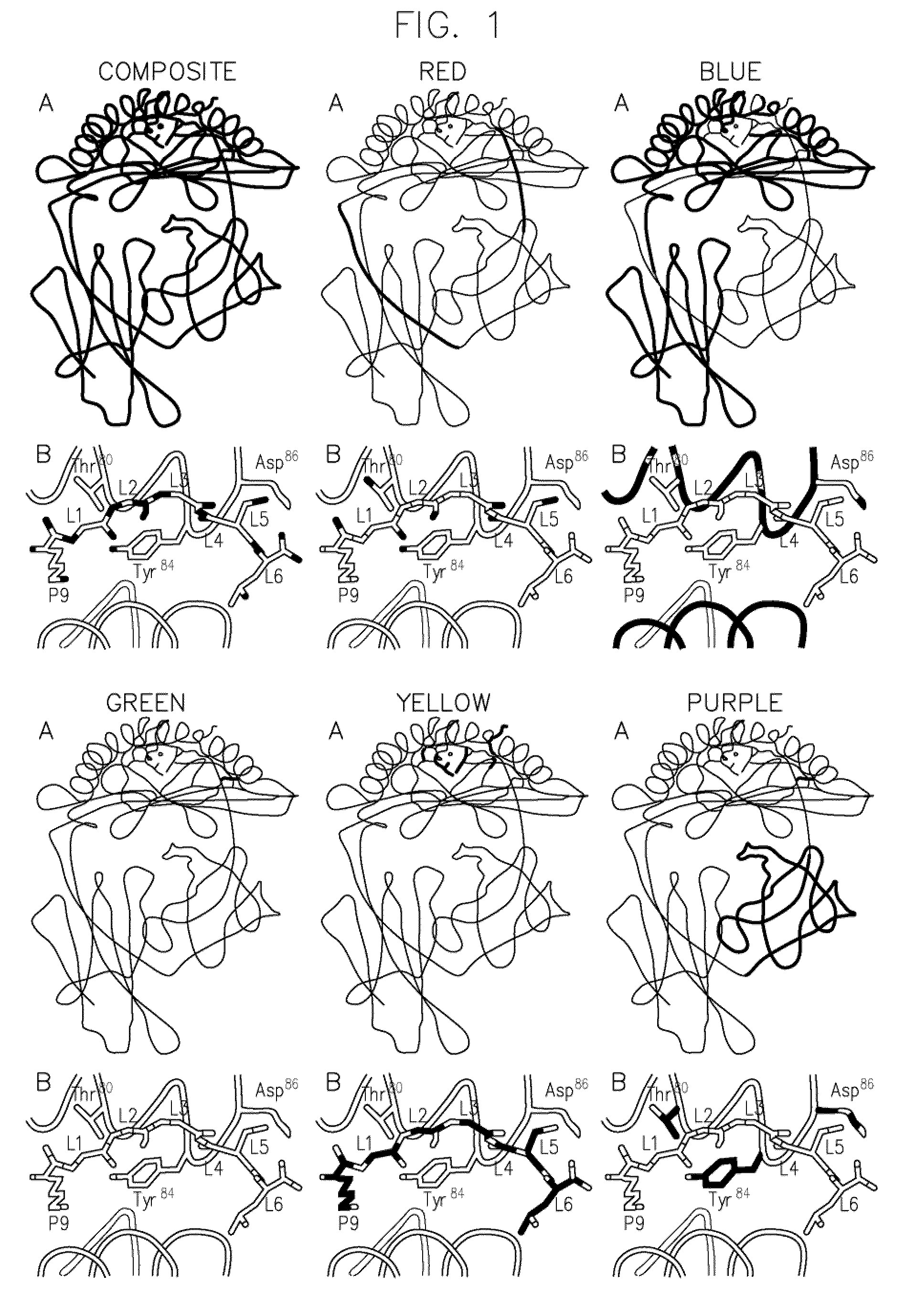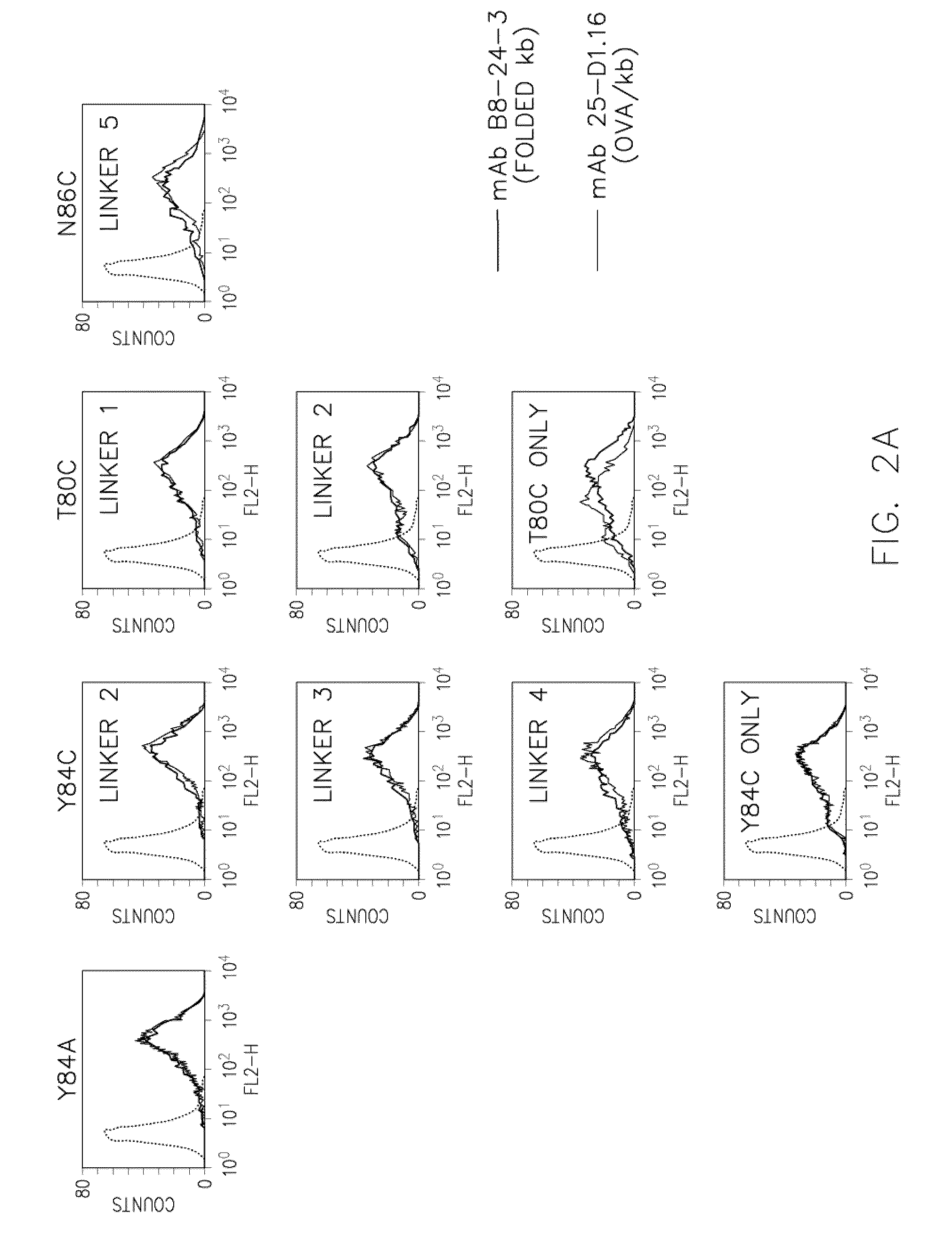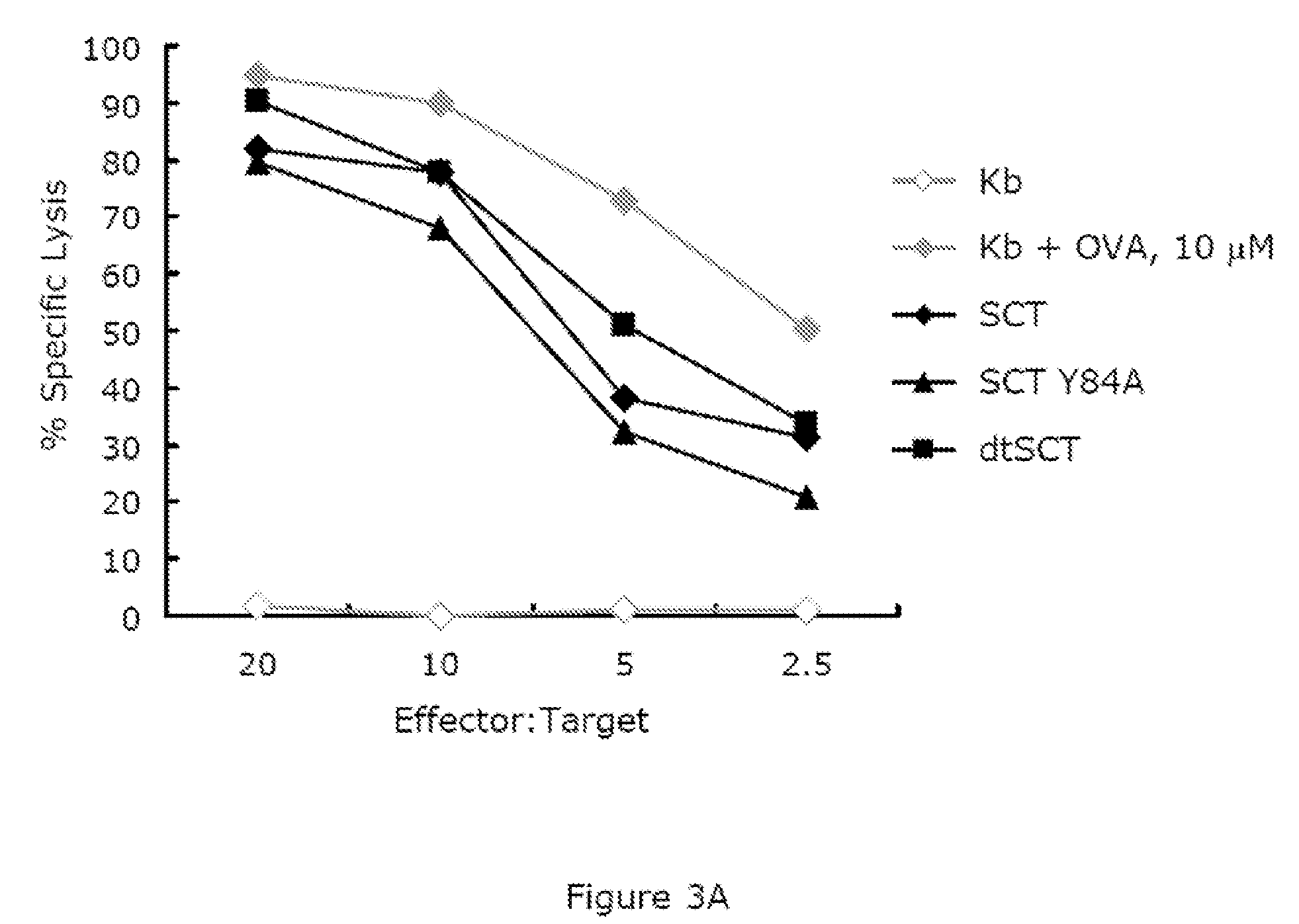Disulfide Trap MHC Class I Molecules and Uses Therefor
a technology of disulfide traps and molecules, applied in the field of disulfide trap mhc class i molecules and uses therefor, can solve the problems of limiting the study of t cells specific for lower-affinity complexes, certain mhc-presented epitopes that have the capacity to activate immune responses are not expressed efficiently at the plasma membrane, and certain limitations regarding general applicability have been recently noted. , to achieve the effect of improving the shelf li
- Summary
- Abstract
- Description
- Claims
- Application Information
AI Technical Summary
Benefits of technology
Problems solved by technology
Method used
Image
Examples
example 1
[0084]This example illustrates disulfide bond engineering strategy.
[0085]As in our previous characterization of SCT molecules (10, 11), we again chose the Kb / OVA system, for which there are excellent reagents to monitor both MHC conformation and peptide occupancy (24, 40). Our approach was to introduce cysteine residues by site-directed mutagenesis, one in the heavy chain of Kb and one in the first linker (FIG. 1A), which extends from the C-terminus of the SIINFEKL peptide to the N-terminus of mature β2-microglobulin (β2m). Placing the second cysteine in the linker, rather than within the peptide itself, we hypothesized would minimize perturbations to the MHC / peptide conformation and also allow us to more readily translate this disulfide bonding approach to SCT constructs based on other MHC / peptide complexes.
[0086]To select the exact positions for cysteine mutations, we superimposed the crystal structures of Kb / OVA (41) and the MHC class II molecule 1-Ek bound to a hemoglobin peptid...
example 2
[0087]This example illustrates characterization of SCT cysteine variants
[0088]Retroviral transduction was used to introduce each of the SCT variants into Kb− / − Db− / −β2m− / − (3KO) fibroblasts (20). This permitted the unambiguous analysis of the transduced class I constructs. Cell surface expression of SCTs with disulfide traps was also confirmed in wildtype cells (see FIG. 5). All of the SCT cysteine variants were detected at the cell surface by flow cytometry (FIG. 2A) both with mAb B8-24-3, which detects folded, peptide-occupied Kb, and with mAb 25-D1.16, which binds specifically to the Kb / OVA complex (24). Kb-reactive mAb Y3 also recognized the SCT variants. The engineered molecules were expressed at high levels similar to the control SCT Y84A, suggesting that they had folded properly in the ER, passed BR quality control mechanisms, and efficiently transited to the cell surface. The level of staining with the Kb / OVA-specific antibody was constant relative to the amount of folded Kb...
example 3
[0091]This example illustrates design of some HLA SCT molecules.
[0092]In some experiments, three different SCTs were used, each with disease relevance. The first SCT was constructed with the peptide, G280-9V (YLEPGPVTV), bound to A2. This peptide is derived from the melanocyte-specific gp100 protein, which is expressed in most melanomas (106, 114). Adoptive transfer of cultured tumor-infiltrating lymphocytes specific for gp100 has been shown to cause tumor regression (90). The second SCT was constructed with the peptide, FAX (LLFGYPVYV) also bound to A2. This peptide is derived from p40tax protein, the major antigenic protein of the human T-cell leukemia virus (HTLV), which causes adult T-cell leukemia (107, 115). The third SCT was constructed with the peptide, NP383-391, (SRYWAIRTR) bound to B27, and is a fragment of the influenza A nucleoprotein (108). These antigens were chosen for their predominant roles in CTL responses to melanoma, HTLV, or influenza, respectively. However, th...
PUM
| Property | Measurement | Unit |
|---|---|---|
| Fraction | aaaaa | aaaaa |
| Length | aaaaa | aaaaa |
| Cell angle | aaaaa | aaaaa |
Abstract
Description
Claims
Application Information
 Login to View More
Login to View More - R&D
- Intellectual Property
- Life Sciences
- Materials
- Tech Scout
- Unparalleled Data Quality
- Higher Quality Content
- 60% Fewer Hallucinations
Browse by: Latest US Patents, China's latest patents, Technical Efficacy Thesaurus, Application Domain, Technology Topic, Popular Technical Reports.
© 2025 PatSnap. All rights reserved.Legal|Privacy policy|Modern Slavery Act Transparency Statement|Sitemap|About US| Contact US: help@patsnap.com



